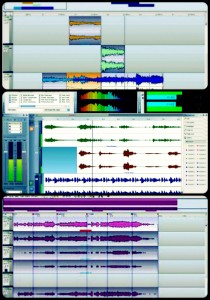Audio is more important than video. Imagine watching a movie where the video quality is a bit poor – with lines running through it, but the sound quality was amazing.
You would watch it no problem. Small sacrifice. Now imagine the opposite. The picture is clear but the actors cannot be heard and there is a loud buzz in the audio. Press stop! No way! Audio plays a large part in any production.
Audio mixing is the art of seamlessly bringing together many sounds to create a single audio piece, a feeling, a soundscape, an atmosphere and an environment. The key to this creation is layering your audio and a correct audio mix & mastering.
Try it! Here is a very basic example. Stand outside in the street. What do you actually hear? The traffic, people talking, birds, wind, and a variety of other sounds in a variety of sound levels at a variety of times. Now imagine if you could control every one of those sounds separately, choosing what is heard when and how loud, for how long. Well you can. If you record them separately or find them as sound effects separately then they can be controlled. Now add them one by one. This is your mix. The sound level and how often each sound will appear in your final product are the key, and the art of controlling each sound element. This applies to any product you are producing, the concept is the same. Now your audio project has six or ten tracks layered, all of them controlled by you. It is rich and realistic and it fills up the room transforming a studio into the street outside. Now go ahead and throw in some music or a narration, and there you have it, a mix worthy to be heard, and with your eyes shut, to be seen!
J.I. – Acting Head



